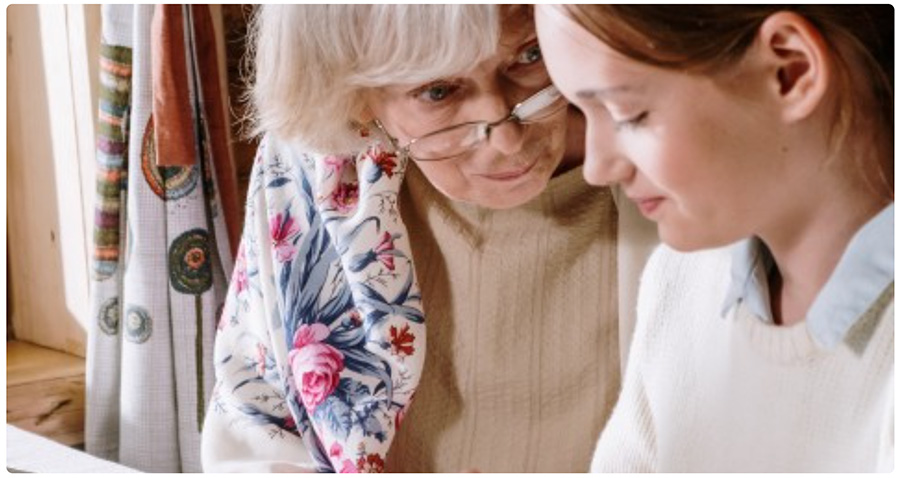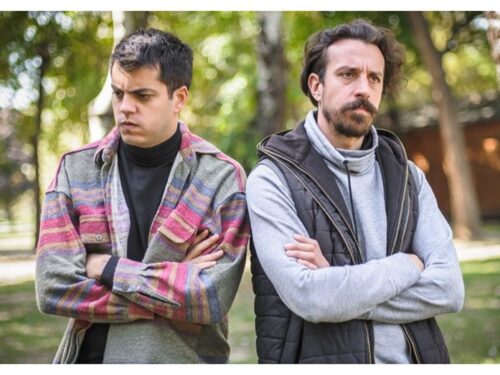
By Cynthia Burnham, MBA
You’re watching an old movie. The white actors have put on blackface with white, painted, oversized lips, and eyes wide. They dance around in a goofy way, wear strange clothes, and tell bad jokes in an exaggerated “uneducated” accent. The audience in the movie laugh hysterically throughout.
Bad, right?
I hear many of you saying, “Absolutely! I hope we have gone way beyond that!” We shake our heads condescendingly at those poor, biased people of the past. We “more evolved” folk know that making fun of people based on skin color, racial background, physical looks, culture, etc. is not how responsible grownups are supposed to behave.
And yet, and yet….
Today, I saw a video of a child posted on social media. It was for the 100th day of school, though I have also seen similar ones around Halloween. The child was dressed like a little old person – gray hair, an old-fashioned flowered hat, badly-fitting clothes, and a cane. They were imitating an infirm, shaky, old walk. Everyone in the comments was laughing and saying “Oh how cute! Aren’t they adorable!” About someone dressed as a disabled old person.
Wait. Does anyone else see a disconnect here? What are we teaching these children?
I know, I know, maybe I’m a curmudgeon. They didn’t mean any harm, you say. But somehow, anything that treats another group as lesser because of who they are (rather than what they do) – whether it’s suggesting they are less than fully-human, or less intelligent, or laughingly childlike – somehow strikes me as at least potentially biased and worth examining.
As I have aged (thankfully), I’ve started noticing bias-based language about age, which categorizes people into “less-than” classes simply because of the group they are in. Let’s be clear: “curmudgeon,” “little old lady,” and “Granny,” are the typical monikers used, and they are most decidedly not respectful.
Please don’t read this as my minimizing the Black experience in America. That can be seen as on a different scale. It just seems to me that mocking behaviors that are inappropriate and disrespectful to one group are inappropriate for any group…and if I were a Black senior woman, I wouldn’t want to be treated like a “little old lady” either
Even so-called “good” descriptions or affectionate terms of endearment can wind up as biased putdowns.
My mom is 101. She does not wear an old-fashioned flowered hat, nor walk with a cane. In fact, she wears bright, dramatic colors, and embroidered baseball caps. Now, she’s had some compromises, it’s true, and she doesn’t move as fast as she once did. But my mom was always a force of nature – a fantastic artist who still paints actively, a woman who took up belly dancing in her mid-50’s, and someone who drove all over up until the pandemic hit. And she isn’t small or petite.
But in the last few years, when we go places, people say what they think are good things about her, such as, “Oh, she’s so adorable, she’s so cute,” and they call her “Sweetie,” and other childlike names.
Let me tell you something: she’s never, ever, ever been “sweet” or “cute.” If anything, she has always been kind of a diva. How did she turn into “adorable?” Truth is, she hasn’t. She’s been lumped in with the Grannies, which would horrify her if she was paying attention.
It’s probably my own age calling my attention to things. But I have noticed that age bias is hardly questioned, despite being a U.S. Equal Employment Opportunity (EEOC) protected category – for folks over 40. That tells you something about what our society considers old!
(On the other hand, I was never called “wise” before the last couple of years, so there is that.)
And, yes, you might think that all of us will eventually be in the “Granny” stage (used generically), and there are some cute and sweet people who became sweeter as they age. We will, should we live so long, likely be in a compromised state, so the disabled stereotype has some credibility. But is it cute to make fun of that? Wouldn’t you prefer to be seen as having the ferocity of Dylan Thomas’ Do Not Go Gentle Into That Good Night? Ruth Bader Ginsberg? Alan Greenspan? Dumbledore?
I read a super-interesting study recently by scientists from Harvard that looked at explicit and implicit bias in the U.S. over a nine-year period from 2007-2016. They examined what people say (explicitly) that they believe and feel, vs. what psychological tests indicate they actually do (implicitly) believe or feel. The study looked at our attitudes regarding sexual orientation, race, skin tone, age, disability, and body-weight and focused on answering a simple question: how long it would take for our attitudes to go to “neutral” for each of these categories.
The good news is biases do change over time – witness the blackface example – and that explicit bias is going down in all categories. We know we’re not supposed to be biased. The maximum time they were willing to project was “at least 150 years.”
But the implicit biases forecasts are gloomier. The trends indicated that for sexual orientation, race, and skin tone, we are slowly moving to neutrality, with sexual orientation being the fastest change category. Skin tone bias is changing very slowly – projected 138 years – though at least going in the right direction. Bias against age and disability (often encountered together – think of the cane) is predicated to trend flat – and bad – for as long as they could predict.
The only one that was worse is implicit fat bias, which is getting more negative
Can’t we do better than this?
All of us need to step back and consider our internal emotional reactions when thinking about groups of “other” people. It might be age or disability – as in my examples here – and it could be all the other categories as well. If you laugh at unkind stereotypes, or if you react to a person without knowing them, and feel fear, or disgust, or condescension, or the desire to kiss them on top of their head when they are not a child (or maybe even if they are), you might want to look at yourself and, for goodness’s sake, check your biases.
And give us Grannies a break.
Cynthia Burnham is an expert in interpersonal communication, executive presence and respectful leadership. She is the author of Charisma Edge: A How-To Guide For Turning On Your Leadership Power and a member of CRL’s Facilitator and Coaching Teams and Advisory Council.




